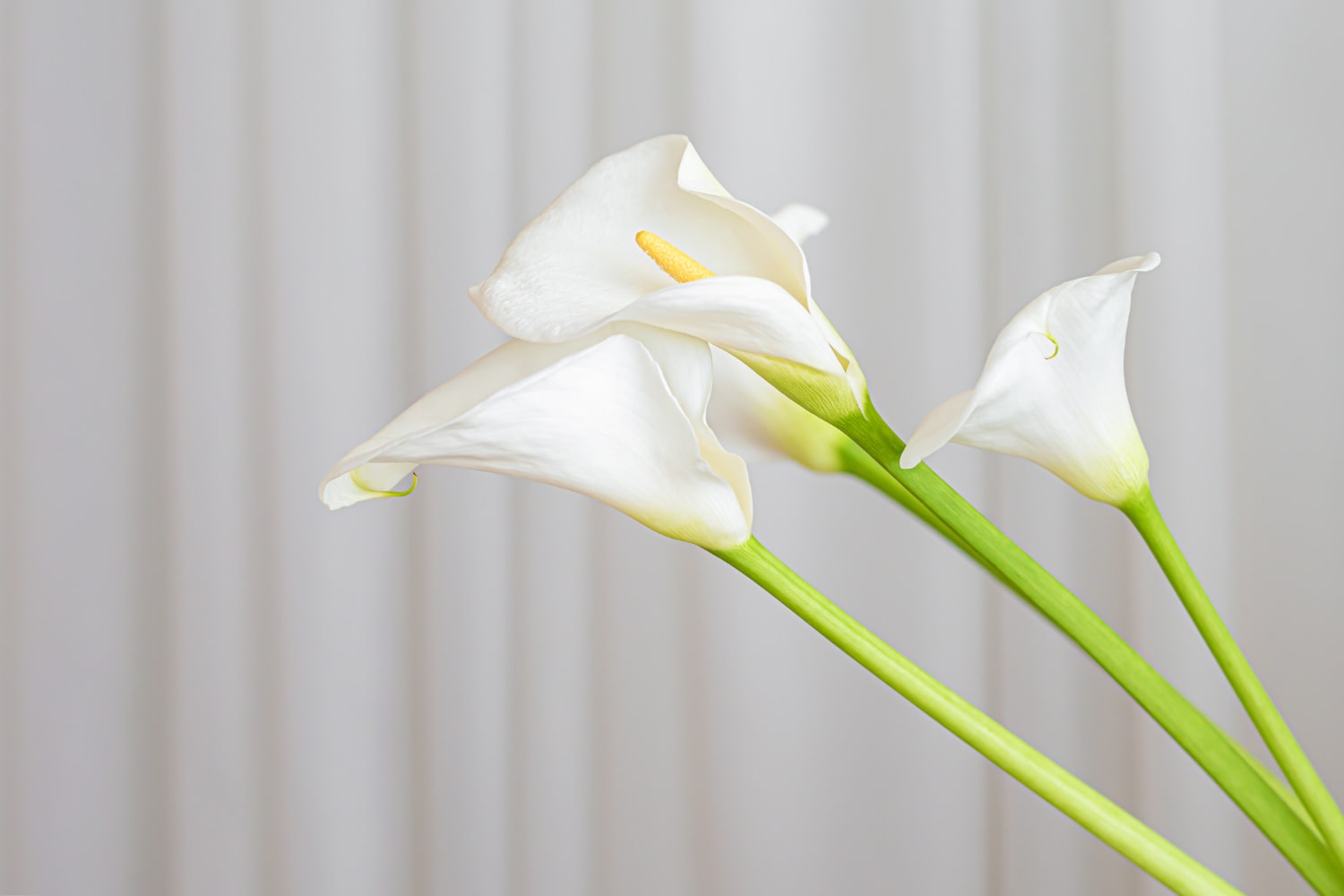Calla lilies are elegant and uniquely shaped flowers that captivate with their delicate beauty and sculptural form. They are often featured in wedding bouquets, formal arrangements and the artworks of renowned painters. Yet behind their graceful appearance lies a wealth of fascinating botanical, cultural and symbolic details. This article brings together interesting and informative facts about calla lilies that you might not know. These insights will help you see this flower not just as decoration but as a symbol of natural sophistication.
- Calla lilies are not true lilies, despite their common name. They belong to the Araceae family and are scientifically classified under the genus Zantedeschia. Their resemblance to lilies comes from their elegant trumpet-shaped blooms, but botanically they are distinct.
- Calla lilies originate from South Africa, where they grow naturally in marshy areas near rivers and lakes. In their native habitat, they are adapted to tolerate brief periods of flooding. This resilience has allowed them to thrive in many parts of the world.
- The name calla comes from the Greek word for beauty. It was chosen to reflect the plant’s striking flower structure, featuring a sleek spathe that surrounds a bright central spadix. This form has made the calla lily one of the most recognizable flowers in the world.
- There are over eight species of calla lilies, and many more cultivated varieties. In addition to the classic white, they come in shades of pink, orange, yellow, purple and even deep black. Breeders continue to develop new colors and patterns, expanding their popularity.
- What most people think of as the flower is actually a modified leaf called a spathe, while the true flowers are tiny blossoms clustered on the central spadix. This unique structure helps the flower stay fresh for up to two weeks in water. Calla lilies are known for their long-lasting beauty.
- These flowers are a favorite among florists due to their elegance and durability. They are widely used in bridal bouquets, memorial arrangements and contemporary floral designs. Callas maintain their shape well and can last several hours without water.
- In Christian symbolism, the white calla lily represents purity, innocence and resurrection. It is often featured in Easter decorations and religious ceremonies. During the Victorian era, it was a symbol of dignity, respect and noble intentions.
- Calla lilies can be grown both outdoors and indoors in containers. They require plenty of sunlight, moderate watering and well-drained soil. In warmer climates, they grow year-round, while in colder regions, their bulbs must be dug up and stored for winter.
- The foliage of calla lilies is also highly decorative, often featuring glossy leaves with light spots. These ornamental leaves complement the flowers and enhance the plant’s visual appeal even when not in bloom. Some varieties are grown primarily for their foliage.
- All parts of the calla lily are toxic and contain substances that can irritate the mucous membranes. Special care should be taken around children and pets. When handled properly, the plant is safe, but it should be treated with caution.
- In many cultures, calla lilies symbolize femininity, strength and grace. They are commonly used in art, fashion, jewelry and tattoos. Their timeless form represents confidence and refined beauty.
- Thanks to their bold shape, calla lilies inspire designers and artists across disciplines. They are often used in logos, interior décor, textiles and packaging. The flower evokes a sense of balance, minimalism and style.
- Callas are suitable for a wide range of occasions because of their versatility. They are equally appropriate for weddings, formal receptions and minimalist home décor. Their adaptability makes them a favorite in many settings.
- Calla lilies have a rare ability known as thermogenesis, allowing them to generate a small amount of heat around the spadix. This helps attract insect pollinators even in cooler conditions. Very few plants exhibit this phenomenon.
- Calla lilies have been portrayed in art, especially in the works of Diego Rivera and Georgia O’Keeffe. Their bold, sensual form lends itself to artistic interpretation. In 20th-century art, they became symbols of feminine energy and inner strength.
- Philosophically and psychologically, the calla lily represents harmony between outer beauty and inner essence. It is seen as a symbol of calmness, clarity and subtle power. People who value elegance and emotional depth are often drawn to this flower.
Calla lilies are more than just attractive flowers; they are natural masterpieces that combine scientific uniqueness, cultural meaning and artistic beauty. These incredible facts reveal that behind their graceful exterior lies a rich world of symbolism and function. Callas enrich our surroundings not only visually but emotionally, adding depth and elegance to any occasion. After reading this, you might begin to see the calla lily as much more than just a flower.





